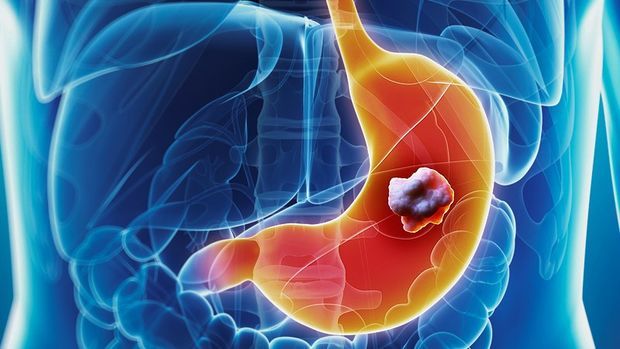ADVERTS
Câncer de Estômago: Um Guia Completo para Entender, Prevenir e Tratar
O câncer de estômago, também conhecido como câncer gástrico, é uma condição séria que afeta milhares de pessoas em todo o mundo. Com avanços significativos na medicina moderna, compreender seus aspectos é fundamental para a prevenção e o tratamento adequado.
ADVERTS
Entendendo o Câncer Gástrico
O estômago é um órgão vital do sistema digestivo, responsável pelo processamento inicial dos alimentos que consumimos. Quando células da parede estomacal começam a se multiplicar de forma descontrolada, temos o início do processo canceroso.
Este tipo de câncer geralmente se desenvolve ao longo de vários anos, começando com alterações na camada mais interna do estômago, conhecida como mucosa. Inicialmente, podem surgir pequenas lesões que, se não identificadas e tratadas, evoluem para tumores mais complexos.
Manifestações Clínicas: Reconhecendo os Sinais
Os sinais do câncer gástrico podem ser sutis no início, tornando o diagnóstico precoce um desafio. Por isso, é crucial estar atento aos seguintes sintomas:
Sintomas Iniciais
- Sensação persistente de plenitude gástrica, mesmo após pequenas refeições
- Desconforto abdominal recorrente
- Azia e má digestão frequentes
- Mudanças no apetite
- Náuseas ocasionais
Sintomas em Estágios Mais Avançados
- Perda significativa de peso sem causa aparente
- Vômitos frequentes, por vezes com sangue
- Fezes com coloração escura e consistência alterada
- Fadiga intensa e fraqueza generalizada
- Dor abdominal persistente
- Palidez acentuada
- Icterícia (amarelamento dos olhos e pele)
Processo Diagnóstico Detalhado
ADVERTS
O diagnóstico do câncer gástrico envolve uma série de etapas e exames específicos:
Avaliação Inicial
O processo começa com uma anamnese detalhada, onde o médico investiga o histórico do paciente, sintomas apresentados e fatores de risco relevantes.
Exames Diagnósticos
- Endoscopia Digestiva Alta
- Considerado o exame padrão-ouro
- Permite visualização direta da mucosa gástrica
- Possibilita a realização de biópsias precisas
- Fundamental para o planejamento do tratamento
- Exames de Imagem
- Tomografia computadorizada de abdome e tórax
- Ressonância magnética em casos específicos
- Eco-endoscopia para avaliação mais precisa da extensão tumoral
- PET-CT para casos de estadiamento avançado
Abordagens Terapêuticas Modernas
O tratamento do câncer gástrico evoluiu significativamente nas últimas décadas, oferecendo diferentes opções baseadas no estágio da doença e nas condições do paciente.
Tratamento Curativo
O tratamento com intuito de cura pode envolver:
- Cirurgia
- Ressecção endoscópica para tumores muito iniciais
- Gastrectomia parcial ou total
- Linfadenectomia (remoção dos gânglios linfáticos)
- Cirurgias minimamente invasivas em casos selecionados
- Terapias Complementares
- Quimioterapia neoadjuvante (antes da cirurgia)
- Quimioterapia adjuvante (após a cirurgia)
- Radioterapia em protocolos específicos
- Terapias-alvo em casos selecionados
Tratamento Paliativo
Quando a cura não é possível, o foco passa a ser:
- Controle dos sintomas
- Melhora da qualidade de vida
- Quimioterapia paliativa
- Radioterapia para controle de sintomas
- Suporte nutricional especializado
- Manejo da dor e outros sintomas
Prevenção e Fatores de Risco
Principais Fatores de Risco
- Infecção por H. pylori
- Principal fator de risco modificável
- Requer tratamento específico quando detectada
- Acompanhamento após erradicação
- Fatores Genéticos
- História familiar positiva
- Síndromes genéticas específicas
- Necessidade de acompanhamento mais rigoroso
- Fatores Ambientais e Comportamentais
- Tabagismo
- Consumo excessivo de álcool
- Dieta pobre em fibras e rica em alimentos processados
- Obesidade
Medidas Preventivas
- Alimentação Saudável
- Consumo regular de frutas e vegetais frescos
- Preferência por alimentos integrais
- Redução de alimentos ultraprocessados
- Moderação no consumo de sal
- Hábitos de Vida
- Prática regular de atividade física
- Manutenção do peso adequado
- Cessação do tabagismo
- Moderação no consumo de álcool
- Acompanhamento Médico
- Consultas regulares
- Realização de exames preventivos quando indicados
- Atenção especial em grupos de risco
Perspectivas e Dados Epidemiológicos
O câncer gástrico continua sendo um desafio global de saúde pública, com incidência variável entre diferentes regiões:
- Alta prevalência no Leste Asiático, especialmente Japão e Coreia
- Taxas intermediárias na América Latina
- Incidência decrescente em países ocidentais desenvolvidos
Avanços na Pesquisa
- Desenvolvimento de novos medicamentos direcionados
- Aprimoramento das técnicas cirúrgicas
- Melhor compreensão dos fatores genéticos
- Novos protocolos de tratamento personalizado
Considerações Finais
O câncer de estômago, embora represente um desafio significativo, tem apresentado melhores resultados de tratamento graças aos avanços médicos e à maior conscientização sobre a importância do diagnóstico precoce. A combinação de prevenção adequada, diagnóstico oportuno e tratamento multidisciplinar oferece as melhores chances de sucesso no enfrentamento dessa doença.
A chave para o controle efetivo do câncer gástrico está na educação em saúde, no acesso aos serviços médicos e na adoção de um estilo de vida saudável. Cada pessoa pode contribuir para sua própria saúde através de escolhas conscientes e acompanhamento médico regular.

